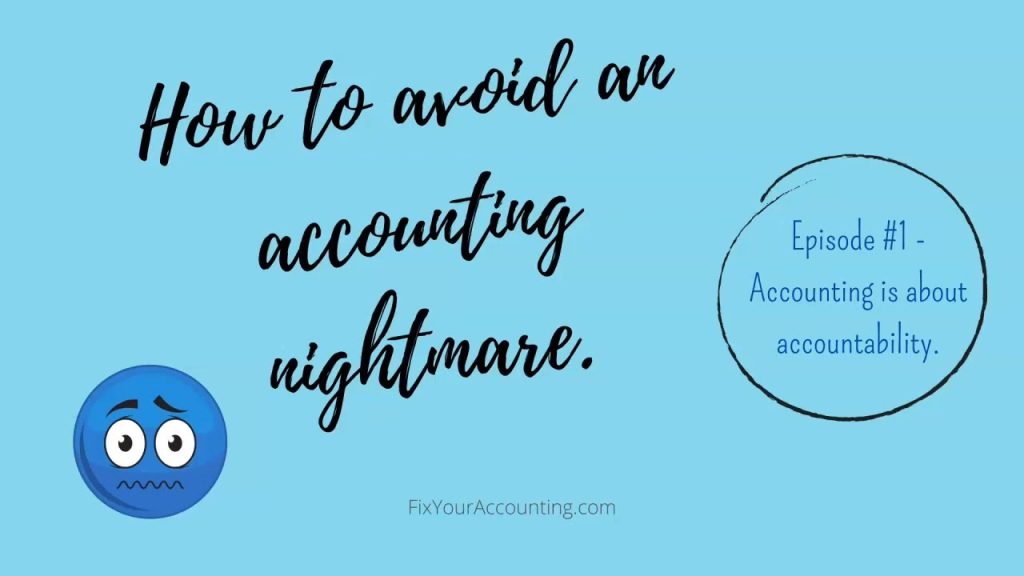
Everyday transactions, from grocery bills to online payments, can easily morph into an accounting nightmare. This happens when the seemingly simple act of recording daily spending becomes a daunting task, leading to errors, confusion, and ultimately, a lack of control over your finances. This article dissects the common sources of these discrepancies, explaining how seemingly small errors can snowball into significant accounting issues. We’ll cover practical strategies for keeping accurate records and maintaining a clear picture of your finances, thereby transforming your everyday transactions from a burden into a manageable process. This article will explore the core reasons why everyday transactions can become an accounting nightmare and offer practical steps to address these issues. We will delve into the common pitfalls and provide actionable advice.
Understanding the Root Causes of Transaction Errors
Common Errors in Recording Transactions
Errors in recording transactions can stem from several sources, including human error, lack of clear processes, and inadequate tools. For example, misplacing receipts, incorrect data entry, or neglecting to categorize transactions properly can introduce significant discrepancies. Poor bookkeeping practices, such as a lack of consistent record-keeping, are also major contributors to the problem. Additionally, the sheer volume of transactions can overwhelm individuals and businesses, leading to delays in recording and processing.
Lack of a System for Categorization and Tracking
The lack of a clear system to categorize and track transactions is a common problem. Many individuals and businesses struggle to properly organize their receipts, invoices, and bank statements. This lack of organization can lead to confusion when attempting to reconcile accounts and identify expenses. A poorly thought-out categorization system makes it difficult to allocate costs to specific projects or departments, impeding valuable financial insights. This ultimately makes it more challenging to track your spending and ensure accuracy.
The Impact of Uncontrolled Spending Patterns
Identifying and Addressing Spending Habits
Uncontrolled spending patterns can significantly contribute to an accounting nightmare. If spending exceeds income regularly, it quickly becomes harder to manage finances. Without a clear budget or spending plan, tracking expenses becomes increasingly challenging. Often, individuals or businesses end up neglecting record-keeping due to the sheer volume of uncontrolled spending. Uncontrolled spending patterns can lead to inaccurate financial statements and an inability to make informed financial decisions.
Establishing Financial Priorities and Budget Allocation
Prioritize your expenses and create a budget. This involves tracking income and expenses meticulously to understand where your money is going. By allocating resources to different financial goals (short-term and long-term), you create a clear spending plan. This empowers you to identify potential problems and make course corrections in your spending. Consider using budgeting apps or software for this purpose—these can automatically categorize transactions and provide insights.
The Role of Technology in Streamlining Record Keeping
Utilizing Accounting Software and Tools
Modern accounting software and tools have made record-keeping significantly easier and more accurate. These software solutions streamline the process of tracking transactions, categorizing expenses, and generating financial reports. Using cloud-based accounting software, you can access your records from anywhere, anytime, minimizing errors and maximizing efficiency.
Automation and Integration to Reduce Errors
Automating repetitive tasks, such as data entry and reconciliation, is another crucial advantage of using accounting software. These tools can detect common errors and inconsistencies, improving the overall accuracy of your records. Integrating banking accounts automatically imports transaction data, eliminating manual entry and minimizing human error. Consider using a financial management tool with automated reporting to gain actionable insights quickly.
Practical Tips for Maintaining Accuracy
Implementing a Consistent Record-Keeping System
Establishing a consistent record-keeping system is crucial. This includes using a dedicated notebook, spreadsheet, or software for recording every transaction. The key is consistency; each transaction must be recorded promptly and accurately, using clear labeling, coding, or tagging to ensure clarity and future retrieval.
Regular Reconciliation and Verification
Regular reconciliation and verification are essential steps in maintaining accurate records. Regularly compare your financial records (bank statements, credit card statements) with your internal records to detect any discrepancies or errors immediately. Early detection and correction of any inconsistencies can prevent issues from escalating.
Case Studies and Examples
Real-World Scenarios of Financial Disarray
Imagine a small business owner who neglects to record transactions consistently; they may face difficulty tracking expenses and accurately reporting their income. This leads to potential problems with taxes and financial planning. A clear system can prevent this situation.
Successful Implementations of Financial Management Systems
A company successfully implemented a cloud-based accounting software and experienced a 15% improvement in efficiency and a 10% reduction in errors. This highlights how adopting the right technology can directly impact your financial well-being.
In conclusion, navigating the complexities of everyday transactions and ensuring accurate accounting doesn’t have to be a nightmare. By implementing robust record-keeping practices, understanding the nuances of various transaction types, and leveraging modern tools and technologies, individuals and businesses can gain control over their finances. This knowledge empowers them to make sound financial decisions, avoid potential discrepancies, and ultimately, achieve financial success. For personalized guidance and further resources, consider consulting a financial advisor. Don’t let everyday transactions become an accounting nightmare; take control today!